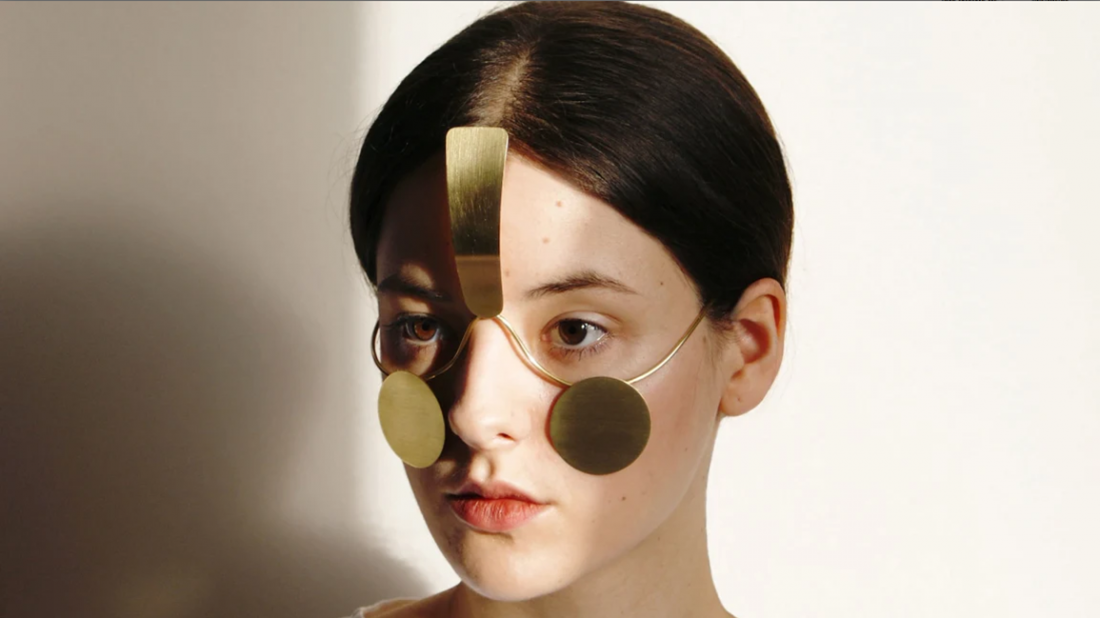
Read by the City: Digital Transurbanism and Facial Recognition
Images of Hong Kong protesters tearing down facial recognition towers to avoid being identified by the authorities started circulating online in September 2019, quickly becoming a symbol of the technological dimension of contemporary struggles against power. Technologies capable of recognizing citizens by “looking” at their face are now becoming part of the urban fabric but citizens do not always accept it without putting up a fight.
What kind of strategies are citizens acquiring in the attempt to escape these forms of surveillance? What devices and technologies can they use to alter their bodies and make themselves undetectable?

An attempt to answer these questions was proposed by GG members Oğuz “Oz” Buruk and Mattia Thibault at the international conference “Transhuman Faces”, held at the PIAST in Warsaw, in January 2020.
Their presentation was situated at the intersection of three different EU-funded research projects: the ERC project FACETS (Prof. Massimo Leone) dedicated to the semiotics of the face in the digital era and hosting the conference, the MSCA-IF project ReClaim (Mattia Thibault) dedicated to urban gamification and the MSCA-IF project WEARTUAL (Oğuz “Oz” Buruk) investigating wearable technologies and virtual reality.
Buruk and Thibault contextualised this question in the paradigm of transurbanism, which, in turn, builds on the idea of transhuman technologies and how those technologies will affect the lives of citizens and the development of cities. Let’s give a closer look to these seemingly distant concepts to comprehend how transhuman technologies, cities and faces are related to each other. Transhuman technologies, in a nutshell, can be defined as technologies which are embedded into our bodies for enhancing the physical, sensory, cognitive and emotional skills of human beings. Here, we refer to technologies such as robotic limbs, brain-integrated chips or synthetic eyes that would provide superior sight. For some, this is a level which can be the next node in our evolution, but it is also not completely irrelevant to claim that this era has already been started with all the wearable or medical technologies already being integrated into our bodies.
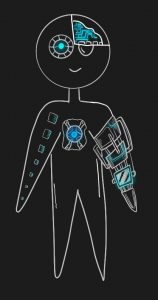
Transurbanism, in that sense, is a framework which tries to understand how cities will develop, be planned and managed when the inhabitants of the city are transhumans. The Transurban framework tries to reveal the opportunities and challenges when the enhanced physical, cognitive and emotional abilities of transhumanism meet with the managerial, societal and managerial aspects of the city. For sure, implications of such clash between those different dimensions requires a quite in-depth discussion. In this post, we will focus on the role of faces and facial recognition in this process. Faces are a critical part of our identities and currently there is an ongoing tension between human faces and city surveillance systems. But, how will transhuman faces look like in a transurban age? It is a hard question to answer, but let’s take a look at the current applications of face augmentations to take our ideation further.
While they might not be yet properly transurban, today our cities are becoming increasingly smart. Urban areas are being filled with all sorts of sensors capable of measuring air or water quality, tracking traffic levels, issuing speed tickets, filming the streets and recognising citizens by their faces. Smart cities have acquired a sensory dimension, and they often direct their sensors to their citizens, effectively becoming panopticon cities.
Citizens have always been observed in the city – by passers-by, shopkeepers, law enforcement etc. – but they are for the first time being observed by the city. Not all citizens are willing to let the smart city tracking them and several strategies of disruption are emerging around the globe.
In order to systematise them, let’s first propose and extremely simplistic schema of the working of face recognition:
There is a sensor that perceives a presence and confronts it with a prerecorded pattern.
We have therefore three key elements: a perception, a presence and a pattern. According to these three elements we can articulate three possible strategies to avoid facial recognition:
- Side trackers: devices that exploit the pattern to trick the facial recognition system;
- Camouflage: devices that hide the presence of a face in the urban environment;
- Dazzlers: devices that hinder the perceptivity of the sensors.
Let’s see some examples.
Side trackers
Side trackers replicate several times the patterns that the facial recognition systems are looking for. This might be made in more or less sophisticated ways. It can present realistic depictions of faces or facial elements, like in Anonymous by Sanne Weekers, or it can reverse-engineer the abstract patterns contained in the machine to use them against it, like in the Hyperface clothing by Adam Harvey. In any case, the facial recognition system won’t be able to discern between the real face and the side-trecker.

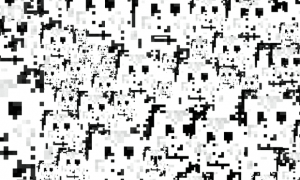
Anonymous by Sanne Weekers; Hyperface clothing by Adam Harvey
Camouflage
Camouflage is a simple and old technique, working equally well on human observers and on Smart cities sensors. However wearing continuously facial camouflage can cause several problems, both for one’s social life and in face of the law – in many continues it is illegal to cover one’s face. For this reason many activists and designers have come up with several different devices Some of them can metaphorically make use of pixelation (Pixelhead by Martin Backes), others can use digital technologies to their own advantage, projecting several moving visages onto one’s own (Wearable face projector by Jing-cai Liu). Other projects attempt to create fashionable devices, ones that do not render the face unrecognisable to other humans, only to machines. The haircut and makeup by Adam Harvey (CV Dazzle) and the jewelry by Ewa Nowak propose a way to trick facial recognition without forfeiting a nice and glamorous appearance.

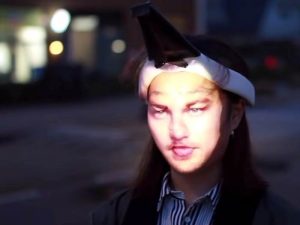
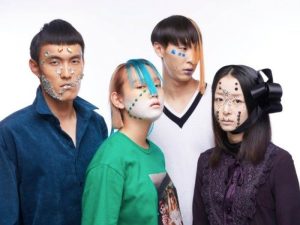
Pixelhead by Martin Backes; Wearable face projector by Jing-cai Liu; CV Dazzle by Adam Harvey
Dazzler
Dazzlers take advantage of the fact that facial recognition technologies make use of infrared light, while humans cannot see it. These devices project (Privacy Visor by Isao Echizen) or reflect (Ghost by Reflectacles) infrared light, so to blind the sensors, and therefore render faces invisible.
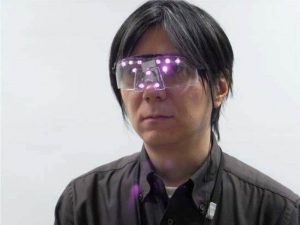

Privacy Visor by Isao Echizen; Ghost by Reflectacles
Those examples are clear indicators that when it comes to our faces, the variety of applications is great, because faces are highly visible canvases that express our identity. Although some solutions favor hiding or replacing the face completely, many others just modify it, still adhering to the real shape. Some of them go beyond protecting the identity by adding to the self expression with their jewelry-like design. Wearable technologies have always been more than just devices, since the fact that they are attached to the body makes them also part of our identity. There are also wearables that use technology to create expressions that are beyond what can be created with regular clothes or jewelry. For example, Monarch by Social-Body Labs is a social interaction and self-expression device. With Monarch, users can swell their shoulders and make them bigger to express their emotions such as excitement. A similar example is the Spider Dress by Anouk Wipprecht, which “attacks” onlookers if they come too close to the wearer. Those examples explain the variations in face augmentations and also hints what future applications can possess.
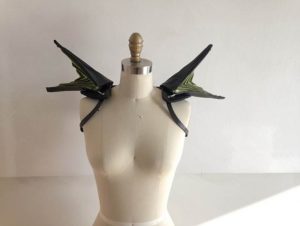
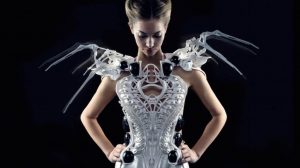
Monarch by Social Body Lab; Spider Dress by Anouk Wipprecht
In conclusion, citizens are augmenting their faces with technology to avoid facial recognition. This, however, will not be enough. It is just a first step in an escalation game, in which smart cities will try to adapt to their transhuman citizens and find new ways of tracking them, following them and perceiving them. They will become, in other words, transurban cities. And considering bodily augmentations are not only about enhancement of functional qualities, we can only imagine what our faces will turn into, what new expressions they will encompass and what the resulting outcome will be in the continuous conflict between the transurban city and the transhuman face.
It is also hard not to see the irony in these developments. Science fiction often imagined a future where the face is the last properly human thing that people will keep. In films such as Alita Battle Angel people change most of their body parts, but keep their faces, as a last resort to conserve their identities. In the real world, however, facial recognition seems to push people in the opposite direction: augmenting technology on their faces to avoid surveillance. It is difficult to say what will be the future of the face in a transurban future: a precious secret to keep hidden or irreducible sign of identity to show to the world?
Read by the City: Digital Transurbanism and Facial Recognition




Sorry, the comment form is closed at this time.